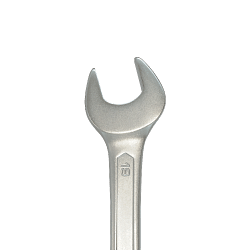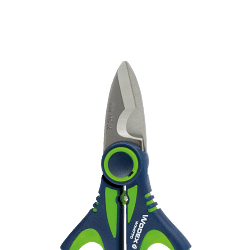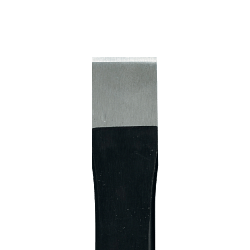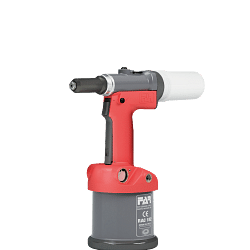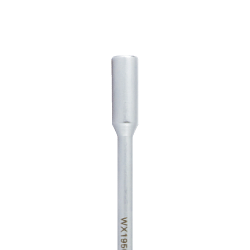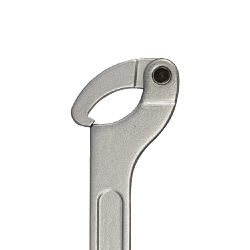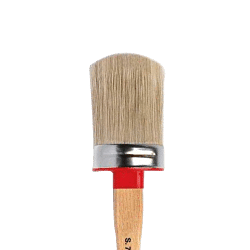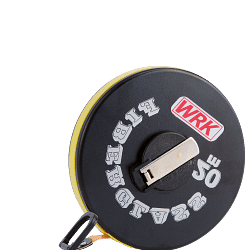Register and use the discount code NEWWELCOME to get 10% off on your first purchase. GET DISCOUNT.
Register and use the discount code NEWWELCOME to get 10% off on your first purchase. GET DISCOUNT.
Register and use the discount code NEWWELCOME to get 10% off on your first purchase. GET DISCOUNT.
Free shipping in 24h from 200€
Catalogues
Customer service
How can we help you?
- Faq
- Customer service
02.927371
- Supporting big orders
02.38298620
-
info@linkindustrialtools.it
- Request assistance with form
Or contact us with the chat in the lower right corner
- All products
 Integral cutting tools
Integral cutting tools Turning tools
Turning tools Thread tools
Thread tools Thread tools
Thread tools- All products
- Thread inserts
 Milling cutters
Milling cutters Drilling tools
Drilling tools Drilling tools
Drilling tools- All products
- Indexable drill bits
- Indexable drill heads
 Clamping systems
Clamping systems Measuring and precision tools
Measuring and precision tools Measuring and precision tools
Measuring and precision tools- All products
- Digital calipers with readings to 0.01
- Analogue calipers
- Digital micrometers
- Analogue micrometers
- Bore gauges
- Snap gauges
- Digital gauges
- Analogue gauges
- Touch probes
- Zero setters and edge finders
- Inspection plates
- Altimeters
- Height gauges
- Squares and levels
- Threaded rings
- Gauge blocks
- Calibrated tapes and thickness gauges
- Digital and analogue hardness testers
- Roughness testers
- Microscopes, lenses and visors
- Digital thermo-hygrometer to measure moisture
- Reset benches
- Optical profile projector
- Professional, digital dynamometers
- Laboratory scales
- Digital amperometric pliers
- Thickness and adhesion gauges
 Hand tools
Hand tools Hand tools
Hand tools- All products
- Combination wrenches
- Spanners
- Hook wrenches
- Tubular wrenches
- Hexagon keys
- Torx wrench
- Socket wrenches
- Screwdrivers
- Torque wrenches
- Torque screwdriver
- Inserts and bits for screw drivers
- Tool trolleys
- Workshop pliers
- Wire strippers
- Cable strippers
- Cutting nippers
- Professional scissors
- Nippers
- Professional shears
- American or Swedish pipe wrench
- Adjustable wrench
- Pipe tools
- Pipe cutter for plumber
- Cutter
- Hacksaws
- Deburring tools
- Chisels
- Hammers and mallets
- Mechanical and conical pullers
- Clamps
- Tap wrenches and die stocks
- Riveters
- Flexometers
- Tape measures
- Markers
- Flat squares and rulers
- Professional dividers
- Professional protractors
- Brushes
- Lubricators and spray nozzles
- T-wrenches
- Reversible ratchets
 Abrasives
Abrasives Abrasives
Abrasives- All products
- Cutting discs
- Deburring grinding wheel
- Flap discs
- Fabric discs for surface treatment
- Abrasive fibre discs with Velcro
- Abrasive cloth in rolls, sheets and bands
- Flap wheels with pin and abrasive wheel with hole
- Abrasive wheels for buffing machines
- Abrasive spiral bands
- Abrasive brushes
- Flexible sanders
- Mounted grinding discs
- Polishing felt
- Solid carbide rotary cutters
- HSS rotary cutters
- Abrasive wheels for sharpening and grinding
- Diamond grinding wheels
- Grinding stone
- Diamond paste
- Abrasive stones
- Files and rasps
- Diamond files
- Grinders and polishing equipment
 Lubricants for machine tools
Lubricants for machine tools Lubricants for machine tools
Lubricants for machine tools- All products
- Water-miscible coolants
- Neat cutting oil
- Minimal lubrication systems
- Oil for guides and slides
- Drums of hydraulic oil fluid
- Anti-freeze for machine tools
- Air coolers
- Oil separator
- Powders and absorbents for oil
- Aspirators for oil mist
- Accessories for cooling lubricants
- Metal and mould protectors
- Grease and paste
 Chemical, adhesives and sealants
Chemical, adhesives and sealants Chemical, adhesives and sealants
Chemical, adhesives and sealants- All products
- Acrylic, cyanoacrylate and epoxy adhesives
- Guns and silicon sealant
- Threadlocker
- Sealants and retainers
- Release agents, lubricants and anti-seize
- Zinc spray and polishes
- Lubrication accessories
- Protections for maintenance
- Industrial Cleansing
- Handwash
- Industrial cloths and rags
- Welding machines
- Electrodes
- Clamps, shields and welding masks
- Antispatter
 Safety equipment
Safety equipment Pneumatics
Pneumatics Lifting systems
Lifting systems Workshop equipment
Workshop equipment Workshop equipment
Workshop equipment- All products
- Column and bench drills
- Accessories for lathes
- Band saws
- Cut-off machines
- Bench grinders
- Power tools
- Spare parts and accessories for Power Tools
- Saws and hole cutters: wood, metal and plasterboard
- Tapered cutters for sheet metal
- Industrial aspirators
- Fume aspirators
- Bench vices
- Technical lamps
- LED torches
- Industrial cable winders
- Trolley wheels
- Quick clamps
- Threaded inserts
- Control knobs
- Packaging accessories and material
- Belt sanders
- Electric tapping machines
 Furnishings and storage
Furnishings and storage Furnishings and storage
Furnishings and storage- All products
- Work benches
- Swivel chairs for office use
- Drawer units for workshops
- Industrial cabinets for warehouses and workshops
- Tool cabinets
- Security cabinets
- Changing room cabinets
- Containers for small metal parts
- Scrap holders
- Workshop trolleys
- Spill pallets for drum storage
- Shelves for warehouses and offices
- Cantilever shelving
- Aluminium ladders
- Modular plinths
- Units and cabinets for waste recycling
 Brand
BrandPromotions
 Bestseller
Bestseller- Catalogues
-
Catalogues
Customer service
How can we help you?
- Faq
- Customer service
02.927371
- Supporting big orders
02.38298620
-
info@linkindustrialtools.it
- Request assistance with form
Or contact us with the chat in the lower right corner
< Hand tools
- Home
- Hand tools
- Chisels
Chisels
Chisels are essential tools in the world of machine shops, representing a key element in the machining of materials. Although these tools may seem simple in their form, they contain a technical complexity that makes them indispensable for a wide range of industrial applications. In this in-depth look, we will explore in detail what chisels are, what they are used for, how they are used, the advantages of using them and answer some of the most frequently asked questions about these tools.
Introduction to chisels: precision tools for industry
Chisels are hand tools used to cut, shape or remove material from a workpiece. They consist of a sharp blade and a handle, designed to be used with a hammer or mallet. Their versatility makes them suitable for a variety of materials, including metal, wood and stone, making them indispensable tools in machine shops.
The function of chisels in machine shops
In machine shops, chisels are mainly used for metalworking. They allow precise cuts to be made and workpieces to be shaped with a high degree of accuracy. Chisels are particularly useful for removing excess material, creating grooves and finishing surfaces. Their ability to perform precision work makes them ideal tools for the production of complex mechanical components.
Types of chisels and their applications
There are different types of chisels, each designed for specific applications. Among the most common are:
- Cold chisels: used to cut hard metals without the aid of heat. They are ideal for demolition work and removing rivets or bolts.
- Wood chisels: designed for working with wood, these chisels have a thinner, sharper blade, perfect for carving and finishing.
- Stone chisels: used for carving and shaping stone, these chisels are made of extremely durable materials to withstand wear and tear.
How to use chisels correctly
The correct use of chisels is crucial to ensure safe and effective work. Here are some key steps for using chisels safely and efficiently:
1. Choosing the right chisel: select the appropriate chisel for the material and type of work to be done.
2. Sharpening the blade: keep the chisel blade sharp to ensure precise cuts and reduce the effort required.
3. Correct positioning: hold the chisel with a firm grip and position it correctly on the work piece to avoid slipping.
4. Use of hammer: use a suitable hammer or mallet to strike the chisel, applying controlled force.
5. Personal safety: wear personal protective equipment, such as safety goggles and gloves, to prevent injuries.
Advantages of using chisels in machine shops
The use of chisels offers numerous advantages in mechanical workshops, including:
- Accuracy: chisels allow cutting and shaping with a high degree of precision, which is essential for the production of quality mechanical components.
- Versatility: the ability to work on different materials makes chisels versatile tools suitable for multiple applications.
- Efficiency: the use of chisels can reduce the time needed to complete a job, improving the overall efficiency of the production process.
- Cost: compared to other mechanical equipment, chisels are relatively inexpensive, offering excellent value for money.
Frequently asked questions about chisels
1. What is the difference between a cold chisel and a wood chisel?
Cold chisels are designed to cut hard metals without heat, while wood chisels are designed to work wood and have a thinner, sharper blade.
2. How do I sharpen a chisel?
To sharpen a chisel, you can use a sharpening stone or a grinding wheel. It is important to maintain the correct angle when sharpening to ensure a sharp and even blade.
3. What are the most common materials used to make chisels?
Chisels are generally made of carbon steel or alloy steel, materials that offer a good balance between hardness and wear resistance.
4. Can a chisel be used to cut materials other than metal?
Yes, there are specific chisels for different materials, such as wood and stone, each designed to optimise performance on that particular material.
5. What safety measures should be taken when using chisels?
It is important to wear safety goggles and gloves, maintain a firm grip on the chisel and use a suitable hammer to avoid injury.
Conclusion: the importance of chisels in machine shops
Chisels are essential tools in machine shops, offering precision, versatility and efficiency in the processing of materials. Understanding the different types of chisels and their correct use is essential to maximise the benefits these tools can offer. With proper maintenance and the adoption of appropriate safety measures, chisels will continue to be a mainstay in industrial production, contributing to the creation of high quality mechanical components.
Read More Read LessIntroduction to chisels: precision tools for industry
Chisels are hand tools used to cut, shape or remove material from a workpiece. They consist of a sharp blade and a handle, designed to be used with a hammer or mallet. Their versatility makes them suitable for a variety of materials, including metal, wood and stone, making them indispensable tools in machine shops.
The function of chisels in machine shops
In machine shops, chisels are mainly used for metalworking. They allow precise cuts to be made and workpieces to be shaped with a high degree of accuracy. Chisels are particularly useful for removing excess material, creating grooves and finishing surfaces. Their ability to perform precision work makes them ideal tools for the production of complex mechanical components.
Types of chisels and their applications
There are different types of chisels, each designed for specific applications. Among the most common are:
- Cold chisels: used to cut hard metals without the aid of heat. They are ideal for demolition work and removing rivets or bolts.
- Wood chisels: designed for working with wood, these chisels have a thinner, sharper blade, perfect for carving and finishing.
- Stone chisels: used for carving and shaping stone, these chisels are made of extremely durable materials to withstand wear and tear.
How to use chisels correctly
The correct use of chisels is crucial to ensure safe and effective work. Here are some key steps for using chisels safely and efficiently:
1. Choosing the right chisel: select the appropriate chisel for the material and type of work to be done.
2. Sharpening the blade: keep the chisel blade sharp to ensure precise cuts and reduce the effort required.
3. Correct positioning: hold the chisel with a firm grip and position it correctly on the work piece to avoid slipping.
4. Use of hammer: use a suitable hammer or mallet to strike the chisel, applying controlled force.
5. Personal safety: wear personal protective equipment, such as safety goggles and gloves, to prevent injuries.
Advantages of using chisels in machine shops
The use of chisels offers numerous advantages in mechanical workshops, including:
- Accuracy: chisels allow cutting and shaping with a high degree of precision, which is essential for the production of quality mechanical components.
- Versatility: the ability to work on different materials makes chisels versatile tools suitable for multiple applications.
- Efficiency: the use of chisels can reduce the time needed to complete a job, improving the overall efficiency of the production process.
- Cost: compared to other mechanical equipment, chisels are relatively inexpensive, offering excellent value for money.
Frequently asked questions about chisels
1. What is the difference between a cold chisel and a wood chisel?
Cold chisels are designed to cut hard metals without heat, while wood chisels are designed to work wood and have a thinner, sharper blade.
2. How do I sharpen a chisel?
To sharpen a chisel, you can use a sharpening stone or a grinding wheel. It is important to maintain the correct angle when sharpening to ensure a sharp and even blade.
3. What are the most common materials used to make chisels?
Chisels are generally made of carbon steel or alloy steel, materials that offer a good balance between hardness and wear resistance.
4. Can a chisel be used to cut materials other than metal?
Yes, there are specific chisels for different materials, such as wood and stone, each designed to optimise performance on that particular material.
5. What safety measures should be taken when using chisels?
It is important to wear safety goggles and gloves, maintain a firm grip on the chisel and use a suitable hammer to avoid injury.
Conclusion: the importance of chisels in machine shops
Chisels are essential tools in machine shops, offering precision, versatility and efficiency in the processing of materials. Understanding the different types of chisels and their correct use is essential to maximise the benefits these tools can offer. With proper maintenance and the adoption of appropriate safety measures, chisels will continue to be a mainstay in industrial production, contributing to the creation of high quality mechanical components.


